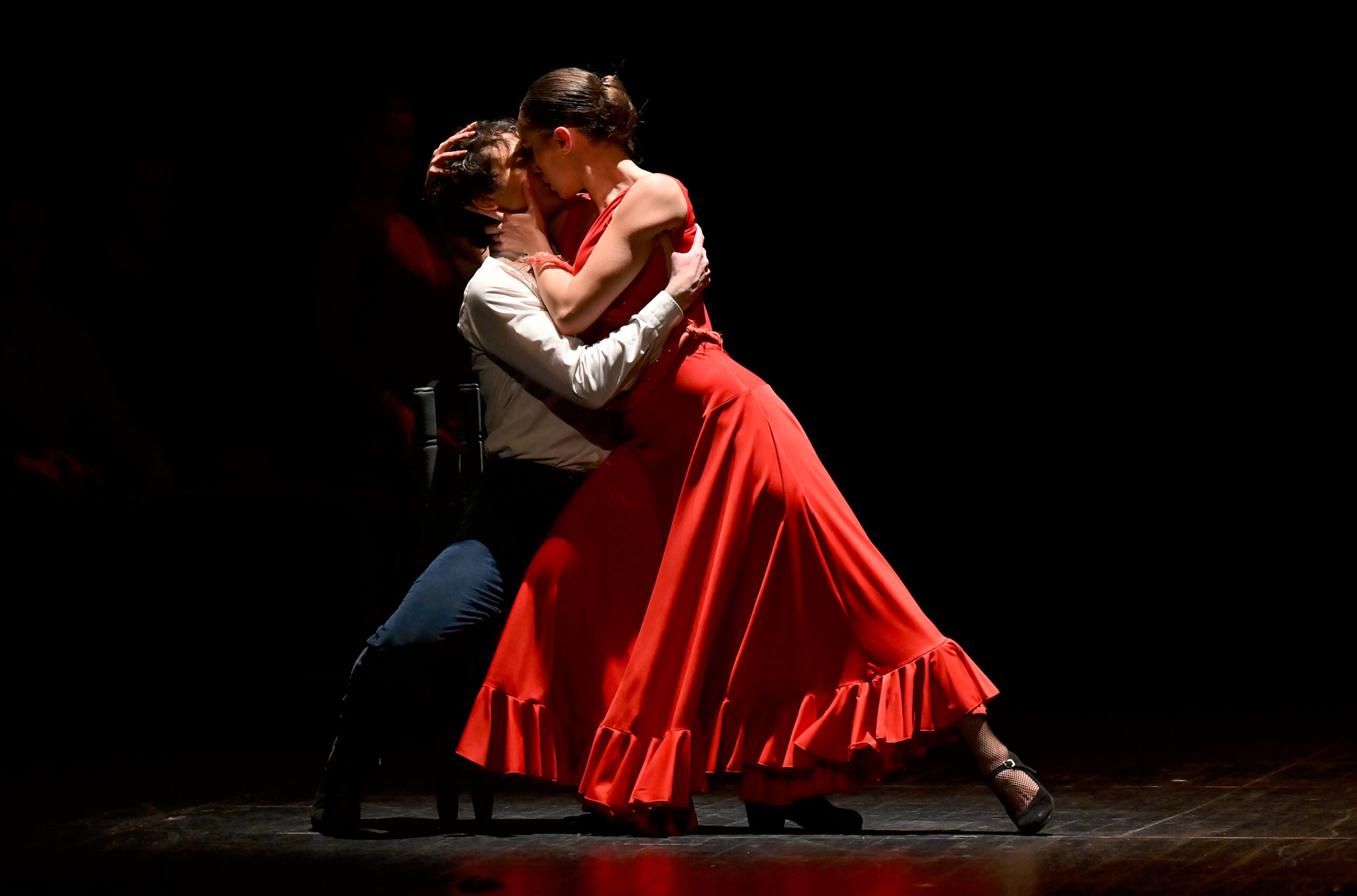I think we have the most wonderful dance in the world that could do so many things if there were a cultural policy…
In 1978 the General Director of Music and Theater, Jesús Aguirre, who later became the Duke of Alba, named Antonio Gades director of the new great project for Spanish dance, the democracy’s first. “I held this position for two years. There was nothing when I arrived. I organized everything: dance class, singing class, the company. It worked wonderfully but I was thrown out for political reasons”.
“I had said that the Spanish ballet didn’t exist. In fact, there are Basque dances, Catalan dances, but they’re danced on either side of the border. They can’t be considered exclusively Spanish. On the other hand, there is a great diversity of folklore across the entire peninsula: Aragonese, Galician, Andalusian, and none can be considered to represent the national style. Franco had repressed Galician and Catalan literature, wanting to impose, within a reactionary project, what was called the language of the Empire: Spanish. I couldn’t allow a political vision like this to enter dance. In Spain there could be more than one ballet: a Basque ballet, one Galician, one Catalan, one Andalusian. And a National Ballet that grouped the best as a representation of the Spanish State. I think we have the most wonderful dance in the world that could do so many things if there were a cultural policy. We have the best in the world”.
The repertoire that Gades stages for the National Ballet is based on recovering the Spanish choreographic memory of the twentieth century. He remakes works like Fandango by Padre Soler and Escenas Vascas with music by the Diez Melodías Vascas by Guridi, both choreographed by Mariemma; Fantasía Galaica by Antonio Ruiz Soler, set to music by Ernesto Halffter, Concierto de Aranjuez by Rodrigo, choreographed by Pilar López, Campanadas a Morts by Lluis Llach and choreography by José Antonio Ruiz, as well as Gades’ own Suite de Flamenco and Bodas de Sangre. In 1982, now with his own company, he also stages El Rango, the ballet version of La Casa de Bernarda Alba by García Lorca adapted by Rafael Aguilar, in which he plays the role of Bernarda.
Despite the great successes the Spanish National Ballet achieves with Gades (the Berlin Opera, the Festival dei Due Mondi in Spoleto, the Festival Cervantino in Mexico, Spanish and American tours, and a National Theater Award for Best Choreographic Performance in 1979), he is fired from his post on March 3, 1980. One of the reasons that contributed to this dismissal by Minister Ricardo de la Cierva were his statements. “The National Ballet was the only ballet in the official world that earned money, that is, it cost taxpayers nothing. Someone (Minister de la Cierva) who worked more as a Minister of the Interior than as the Minister of Culture in the year and a half I was there: he seized El Libro Rojo del Cole, he prosecuted Pilar Miró for El Crimen de Cuenca, and he fired me from the National Ballet”.
Gades always said that it shouldn’t be the artists who should worry about what a Ministry of Culture does, but the politician who should differentiate between who creates culture and who does not. “It is they who must pay attention to artistic realities and act in consequence. In this profession you have to be free. If they coerce you, bad”.
You need to have fun while you work and if you don’t feel that intense pleasure of the game, all is lost. This society keeps us from being as free as we would like, we should at least choose to be free in our work.
Experience teaches that you have to fend for oneself. “I have never been seen in the halls of the Ministry begging for favors”. This approach to life and art is evidenced by Antonio’s efforts to give work to many Spanish families over the decades and in his reputation as the most influential ambassador of Spanish art.
When he was fired as director of the National Ballet he partnered with a leading ballet group to create GIAD (Grupo Independiente de Artistas de la Danza), the Independent Group of Dance Artists. It would be the traumatic interlude that would separate Emilio de Diego from Antonio Gades.
It is then when Carlos Saura appears on the scene, showcasing the figure of Gades and his ballet to unimagined levels for Spanish dance, the definitive blow.
The awards and public recognitions begin to pour in, and in 1979 he wins the National Theater Award for Best Choreographic Performance.


